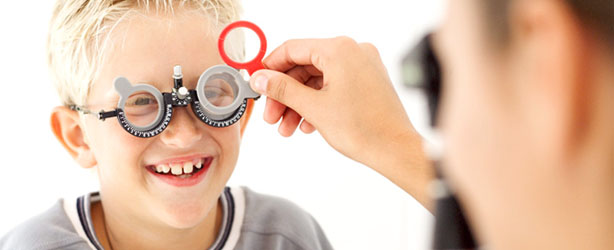
Correcting The Problems
Is this just marketing fluff, or is there actually some truth in this? Kelly Plahay, director of the Eyecare Trust, says that it largely depends on the individual, but that it could potentially help some people. 'With mild cases of poor binocular vision what we tend to do is tell patients to do eye exercises' says Plahay, 'and nowadays the latest treatment involves training the lazy eye to focus by using computer video games - by following a certain image around regularly you can effectively strengthen your eye.'Sparrow concurs that it could have its uses here. Those who've had vision problems since childhood may remember the old eye test game where you had to look through a pair of lenses that gave you an image for each eye, and you'd have to combine them. You might have had to combine images of a lion and a cage, or a dog and a kennel, and putting the animal in its home was your reward for making your eyes work.
'In that respect, the 3D effect - where you send one picture to one eye and one picture to the other eye and the result is something that looks three dimensional - becomes a reward for the child for making their eyes work a little bit harder,' says Sparrow. However, she notes this with caution, as there is currently so little research about it. 'We don't know for sure yet,' says Sparrow, 'because 3D hasn't been trialled in orthoptic clinics or universities for treating lazy eyes yet. It seems to have potential, but we won't know until we've actually investigated it and have some concrete evidence. '
 Nvidia says stereoscopic 3D could be used as a corrective tool for lazy eye, and it certainly looks as though it could help with early diagnosis
Nvidia says stereoscopic 3D could be used as a corrective tool for lazy eye, and it certainly looks as though it could help with early diagnosisOne potentially useful application for stereoscopic 3D, however, is simply providing an easy way to spot problems very early on. 'Small children assume that their perceived world looks the same as everybody else's,' says Sparrow. 'They have no reason to understand or believe that not everybody would see that – if it's a bit blurry they think "that's a bit blurry, that's what everyone can see." They don't necessarily tell their parents or teachers that they can't see something. Whereas if you give them a Nintendo 3D console, or they're watching a 3D movie, and everyone else says: "wow, look at the fish coming out of the screen," and they ask: "what fish coming out of the screen?" – suddenly they've got something to compare it with, so that's good for teachers and parents, like a wake-up call to get their eyes tested.'
Recognising this early on in a child's development is crucial in terms of getting it fixed. 'It's very important that children get their eyes tested at a very early age,' says Plahay, ' under the age of 6 or 7 years old.' This is what Plahay calls the critical age. 'The age of seven is like the cut-off point where the eyes have done their full developing,' says Plahay. At a very young age you've already got a slight prescription, and it's easier to correct. You don't have clear vision as soon as you're born – you're slightly long sighted, and as you get older your vision becomes clearer.'
 Many eye problems can be fixed in childhood following an eye exam, as the eyes are still developing
Many eye problems can be fixed in childhood following an eye exam, as the eyes are still developingPlahay notes that problems such as squints can be rectified with surgery in early childhood, but that this fix is much less likely to work once you reach your teens and adulthood. Similarly, Sparrow says that lazy eye problems can also be rectified if they're spotted early on. 'If they're aged three or four, you can actually improve a problem in a matter of weeks,' says Sparrow. 'If they're six or seven years old it can take months with the same exercises. After the age of eight, that flexibility is much, much less. Once you get into your teens or early twenties, if you have an eye that's blurry, that scrambled connection between the eye and the brain can never be unscrambled.'
Basically, if you have young children, then get their eyes tested. Eye tests are free in the UK up until the age of 16, but Sparrow notes that 'parents don't think of it in the same way they think about going to the dentist. They just think the child will tell them if they can't see, or the teacher will tell them, and that's not the case.'
If, however, like millions of others, you're an adult with a sight problem that prevents you from seeing stereoscopic 3D, then there's not a lot that can be done about it. How big a barrier this will prove to take-up of 3D remains to be seen, as the technology is still in its infancy, but with a large chunk of the population having some sort of problem with viewing 3D, it's unlikely that game developers and film makers are going to make all their content exclusively 3D without working 2D versions for the rest of the population.

MSI MPG Velox 100R Chassis Review
October 14 2021 | 15:04








Want to comment? Please log in.